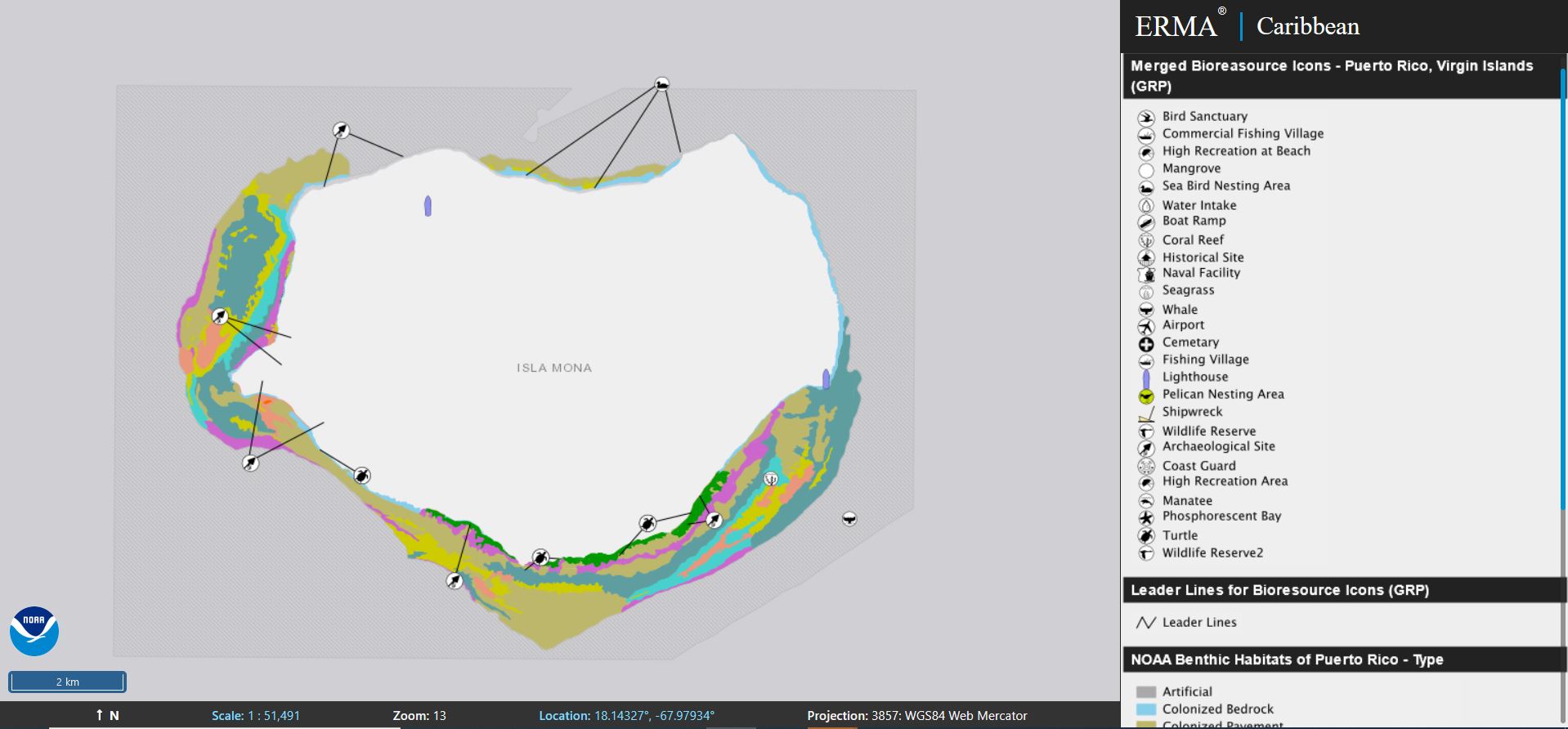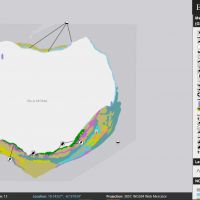Caribbean ERMA
Visit Caribbean ERMA to visualize data and explore the region.
Introduction
The American caribbean encompasses Puerto Rico, the U.S. Virgin Islands, and parts of Florida, and boasts an incredible diversity of marine life-including species like corals, sea turtles, and marine mammals. It is also home to NOAA’s Florida Keys National Marine Sanctuary which provides refuge for endangered species like Elkhorn coral However, the Caribbean also faces challenges like damage from hurricanes, oil spills, and ship groundings that can hurt coral reefs. NOAA’s ERMA is a critical tool to equipping responders to prepare for, respond to, and assess the impacts of environmental disasters in this diverse region.
Emergency Response
- Caribbean ERMA brings together the data necessary to plan for or respond to an emergency response in the Caribbean. It also houses area specific resources like Area Contingency Plans that need to be accessed quickly in case of emergencies.
- Two examples of ERMA’s use in pollution response include identifying resources affected by the 2009 explosion and fire at the Caribbean Petroleum Corporation oil storage facility in Puerto Rico, and determining potential impacts of the 2012 grounding of the M/V Jireh on Mona Island, west of Puerto Rico.
- Caribbean ERMA is also used during natural disasters. After the devastating 2010 earthquake in Haiti, ERMA developers collaborated with the U.S. Environmental Protection Agency, Telascience Lab, and OpenStreetMap.org to bring together important humanitarian response information and create a digital visualization of earthquake damage.
Restoration
- Carribean ERMA provides environmental quality and monitoring data includes data on coral reef structures, sea turtle habitats, mangrove locations, and manmade structures like docks, ports, and derelict vessels. Our scientists use this information as part of the Natural Resource Damage Assessment (NRDA) process to evaluate injuries to the environment caused by pollution, as well as to plan habitat restoration.
- NOAA uses Carribean ERMA to assess natural resources at risk from pollution, plan for and track injury assessment, and determine appropriate restoration in the event of an oil or chemical spill.
more images

 An official website of the United States government.
An official website of the United States government. 


